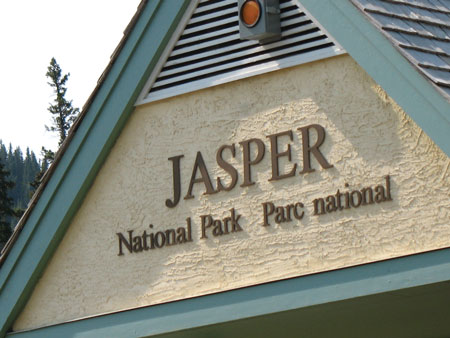Module 3 Intro
1. Module 3 Intro
1.3. Lesson 1 Intro
Module 3—Ecosystems and Their Diversity
Lesson 1—Populations, Communities, and Ecosystems
 Get Focused
Get Focused

Courtesy John Lawford
You have opted for an adventure vacation in a national park nestled in the great Canadian Rockies. As you enter the national park, you are required to slow down due to a speed limit change. And you notice signs telling you to be aware of animal crossings. Inside the park you see very few homes, restaurants, or large buildings. There is clearly no major development in this national park.
As you continue to drive, you become aware of the mountains, lakes, and forests around you. These areas provide diverse habitats for many types of organisms. You may see some of these organisms as you drive. You may wonder how these organisms interact with each other and with their biotic and abiotic environment. More importantly, as you explore this national park, you should consider how you may be affecting these organisms and their environment during your visit.
Consider the following question as you complete Lesson 1:
- How do biologists describe the relationships that exist between species, populations, communities, and ecosystems?
 Module 3: Lesson 1 Assignment
Module 3: Lesson 1 Assignment
Your teacher-marked Module 3: Lesson 1 Assignment requires you to submit a response to the following:
- Leaf Observation Lab Report
- TR 4. Wolves, Trees, and Elk
You can access your Module 3: Lesson 1 Assignment. You can print off the assignment or save the download to your computer. Your answers can be saved on this document to your course folder.
The other questions in this lesson are not marked by the teacher; however, you should still answer these questions. The Self-Check and Try This questions are placed in this lesson to help you review important information and build key concepts that may be applied in future lessons.
After a discussion with your teacher, you must decide what to do with the questions that are not part of your assignment. For example, you may decide to submit to your teacher the responses to Try This questions that are not marked. You may decide to record the answers to all the questions in the lesson and place those answers in your course folder.
The choices you make about responding to the Self-Check and Try This questions will depend upon your learning style, your abilities in this subject, and your goals for the course.
There are several types of questions in this lesson. For the Self-Check questions you can respond mentally, write out your response, or record your answer in any other way that works for you. There are Try This questions that will often be a part of your lesson assignment. These may require more attention and detail.
You will also be asked to complete labs virtually, on your own, or in a science lab. Lab reports will usually be used as a lesson assessment as well. At times, you will be asked to engage in discussion topics with other students. All hand-in assignments will be clearly indicated at the end of Get Focused and throughout the lesson. Not all questions/activities will be submitted to your teacher to be marked, but they do reinforce the key concepts you must learn to be successful.
Think of these questions/activities as little bits of Lego. You need to have many pieces of Lego before you can build a useful object. By the end of each module, you should have collected and stored enough Lego bits of knowledge to feel comfortable building ideas with them. If you are a few pieces short, you need to revisit a lesson.
As you work through Lesson 1, you need to decide if you will make your own notes, bookmark web pages for reference, draw diagrams/charts, or use other means to remember. You are in charge of how you learn. You can save everything in your course folder or, if you prefer paper, then attach your assignments, notes, and musings in a real binder. Don’t forget that some items MUST be put in the course folder.